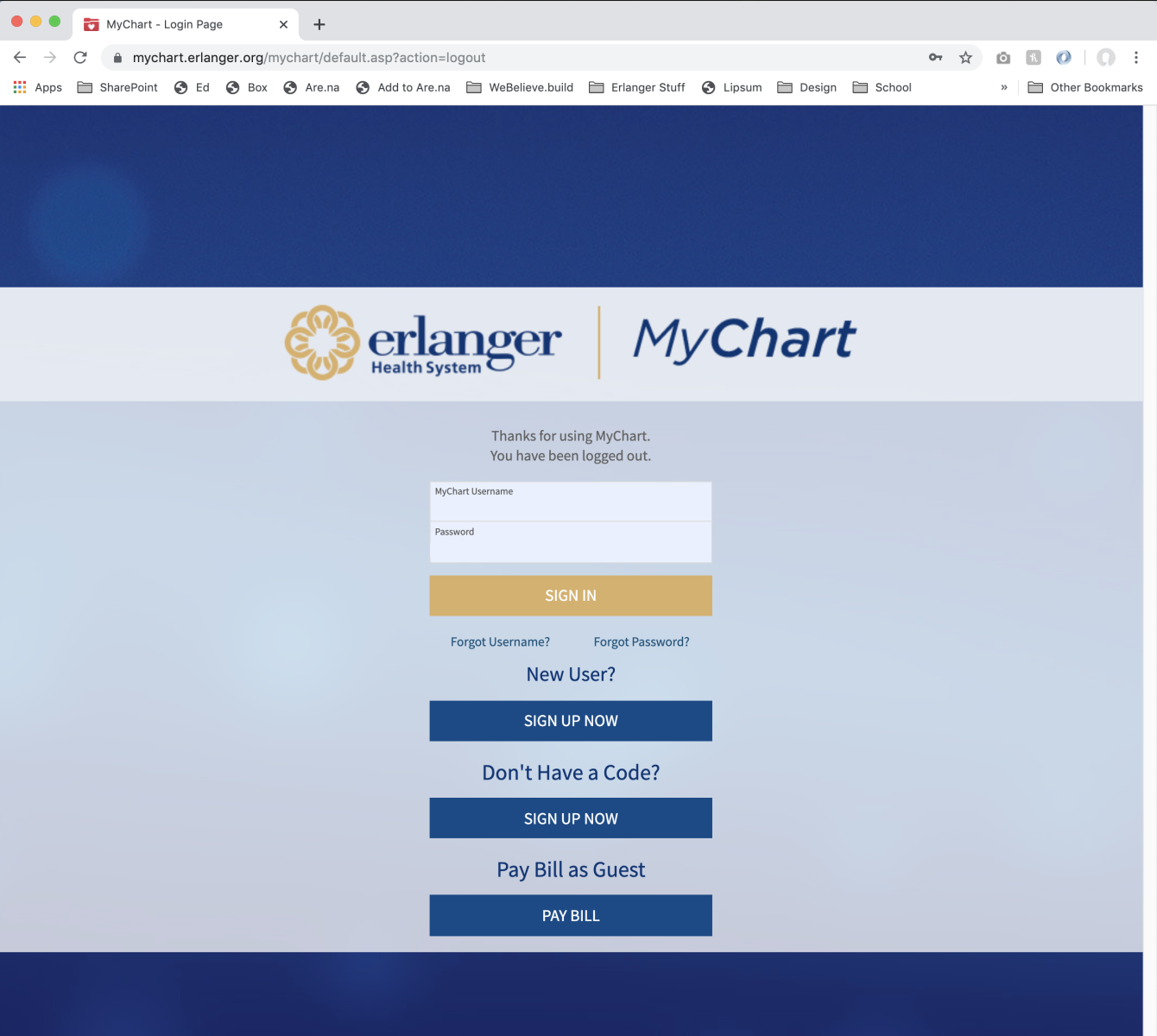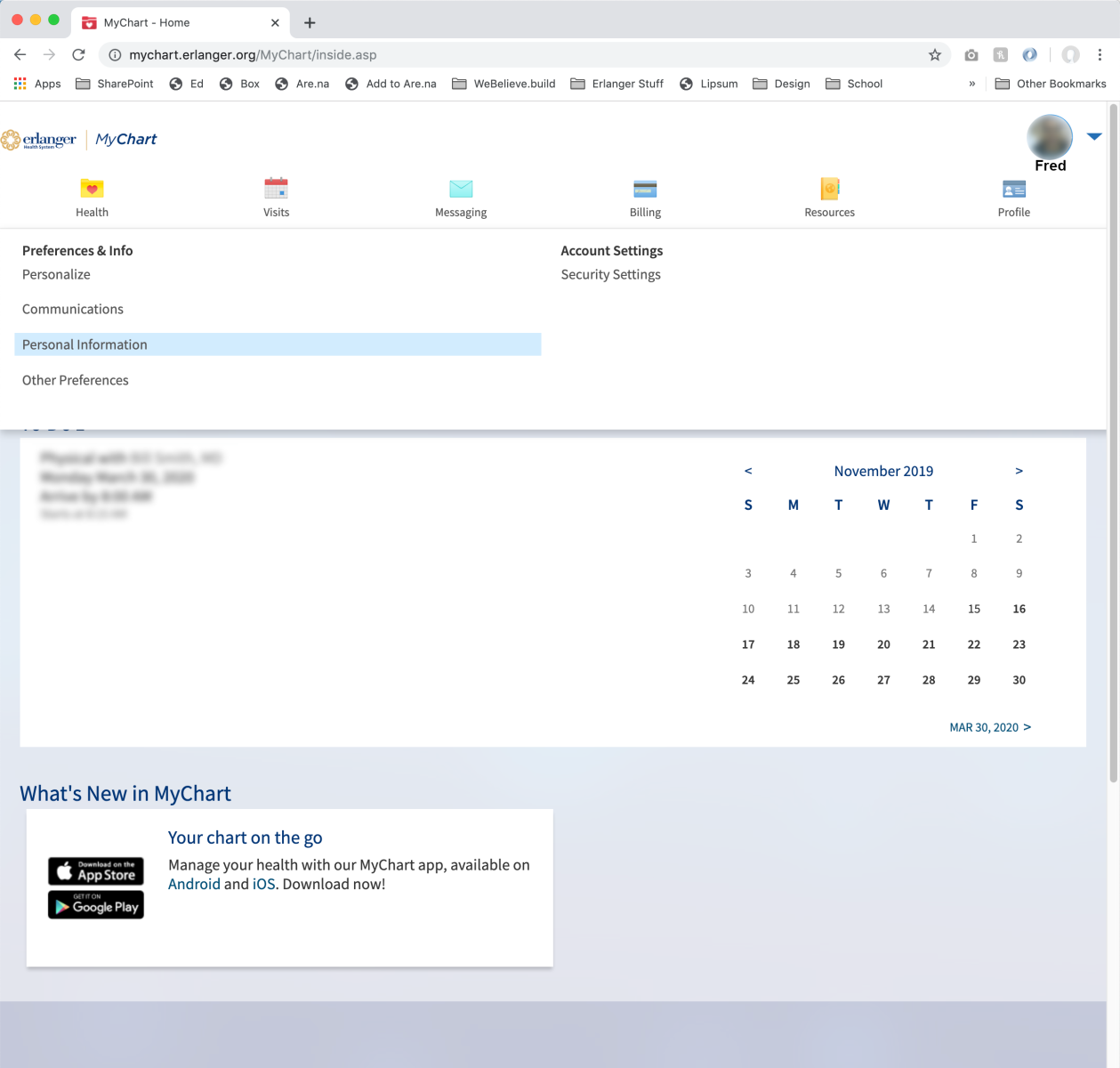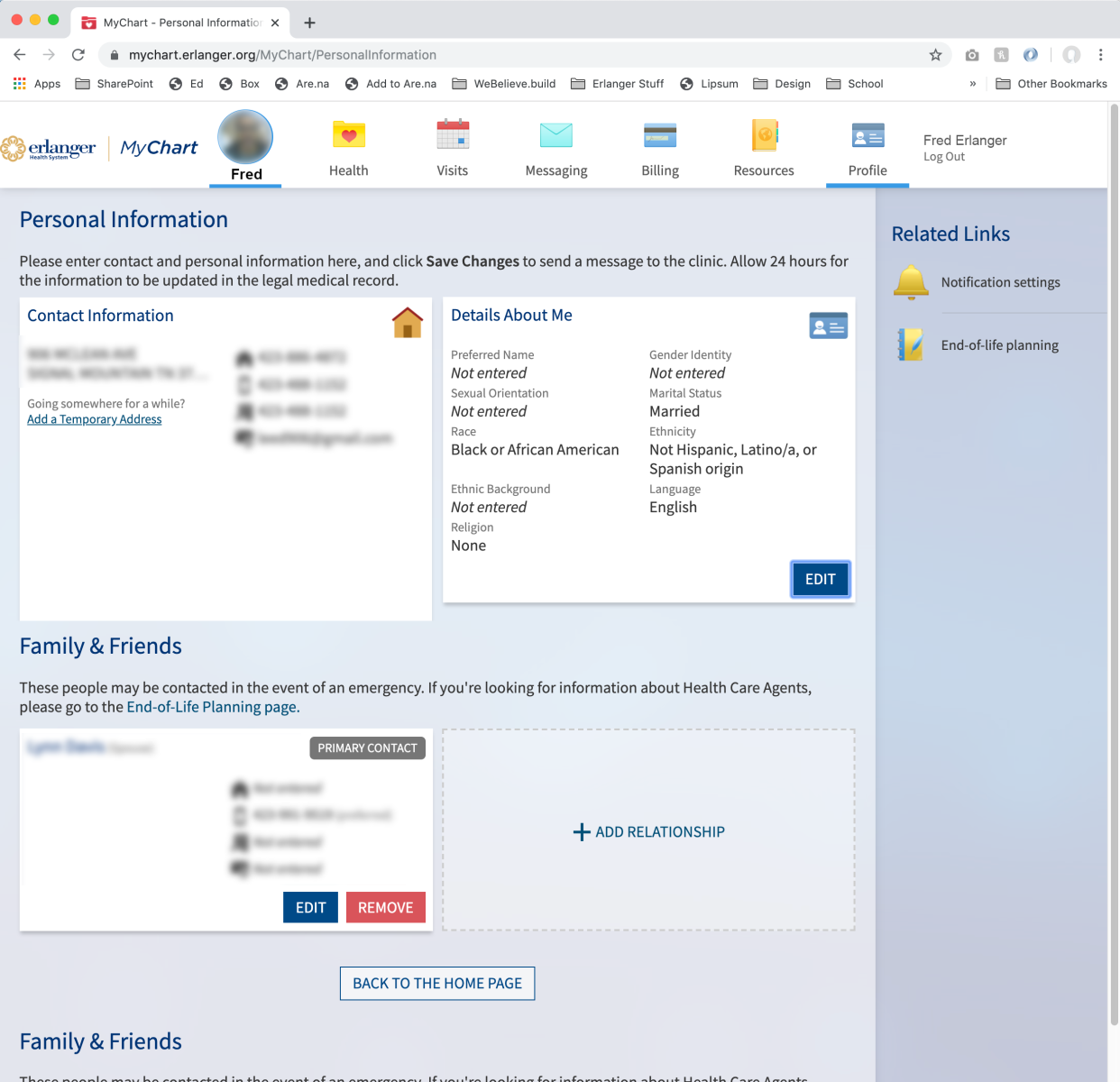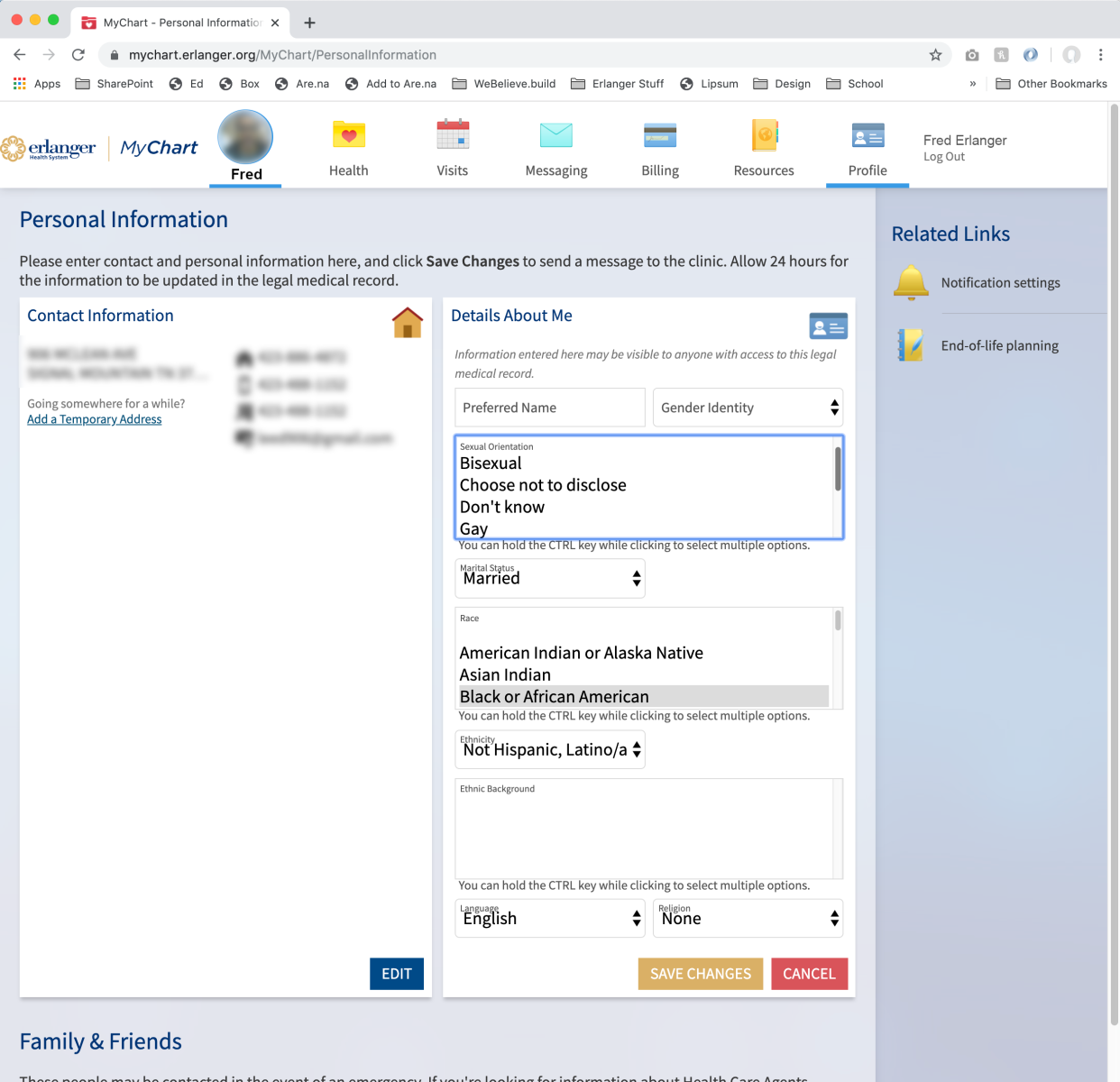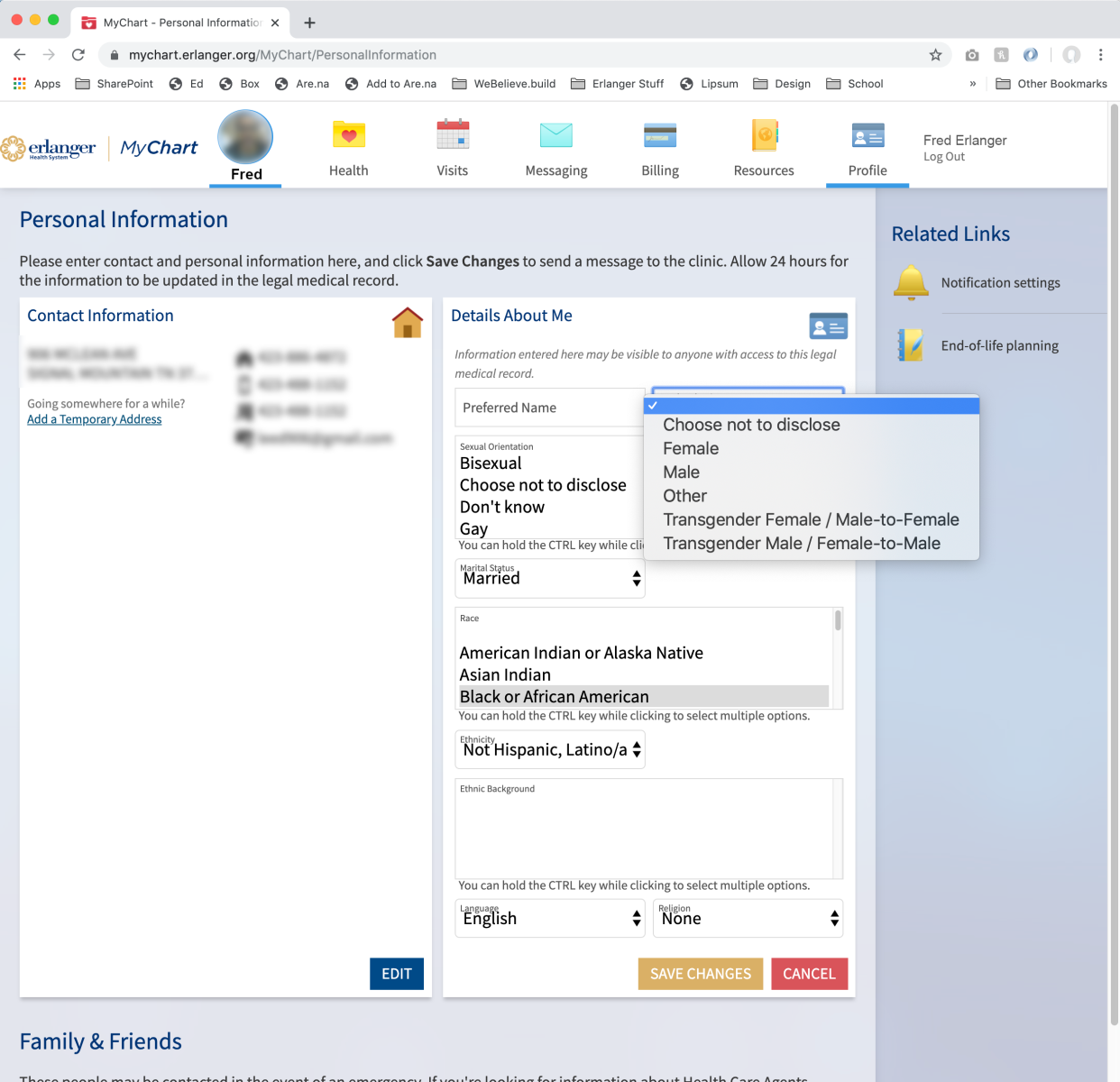The better we know you, the better we can care for you.
Individuals who identify as lesbian, gay, bisexual, transgender, and/or genderqueer (LGBTQ) can now indicate that information in Erlanger’s MyChart patient medical records.
The team at Erlanger wants to avoid assumptions and provide quality care to all of our patients. We are inviting patients to voluntarily share their gender identity and sexual orientation information with our team through MyChart.
Research shows that LGBTQ individuals face unique health risks. When a medical team knows their patients’ sexual orientation and gender preference this helps create an atmosphere where the patient receives the most knowledgeable and informed healthcare.
Patients who proactively participate in their own healthcare receive better care.
Q: Why am I being asked about my sexual orientation and gender identity?
Every patient has unique healthcare needs. Members of the LGBTQ community have health needs that differ from the rest of the population, and experience higher rates of certain health issues compared to others. Learning about sexual orientation and gender identity will help us deliver appropriate health services.
Q: What is gender identity?
Gender Identity is a person’s inner sense of gender. For example, a person may think of his or her self as male, as female, as a combination of male and female, or as another gender.
Q: What does transgender mean?
Transgender people have a gender identity that is not the same as their sex at birth.
- Transgender man (FTM) describes someone assigned female at birth who has a male gender identity.
- Transgender woman (MTF) describes someone assigned male at birth who has a female gender identity.
- Genderqueer describes someone who has a gender identity that is neither male nor female, or is a combination of male and female.
Q: What is sexual orientation?
Sexual orientation is how a person describes their emotional and sexual attraction to others.
- Heterosexual (straight) describes women who are emotionally and sexually attracted to men, and men who are emotionally and sexually attracted to women.
- Gay describes a person who is emotionally and sexually attracted to people of their own gender. It is most commonly used when talking about men.
- Lesbian describes a woman who is emotionally and sexually attracted to other women.
- Bisexual describes a person who is emotionally and sexually attracted to people of their own gender and people of other genders.
Q: How do I choose the correct information?
There is no right or wrong answer. If you don’t find an answer that fits, you can choose “something else” or “other”, or you can talk with your provider.
Q: Who will see this information?
Your provider(s) will see this information, as well as other members of your care team, and it will become part of your medical record. Your information is confidential and protected by law, just like all your other health information.
Q: What if I don't want to share this information?
You have the option to check the box “Choose not to disclose”. Later, your provider may ask you these questions privately during your visit. You can choose whether to share this information at this point and ask your provider more questions.
Q: How will this information be used?
Your provider(s) will use this information to help meet your healthcare needs. In addition, gathering this information from all patients allows the health center to see if there are gaps in care or services across different populations. Learning this tells us if we need to improve the care we give our patients.
Instructions (click image to enlarge)
Go to MyChart login page
Under "Profile" select "Personal Information"
Click "Edit" under "Details About Me"
Select "Gender Identity"
Choose an option



